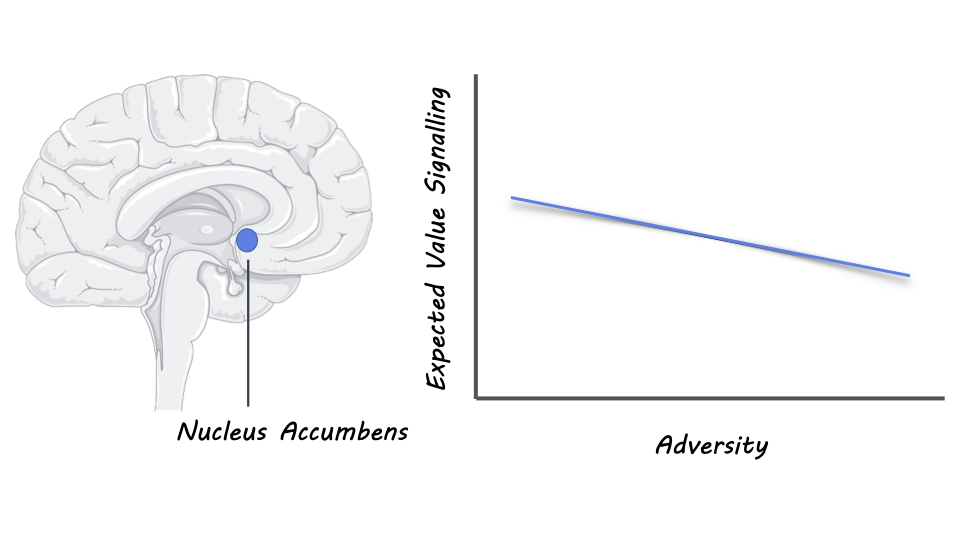Early Life Adversity Has a Long-Term Impact on Reward Learning
Post by Lani Cupo
The takeaway
Reduced maternal interaction during infant nursing, a marker of early-life adversity, is associated with altered neural responses during a reward learning task in brain regions important for psychiatric health in adulthood.
What's the science?
Early-life adversity (ELA) events during childhood such as abuse and neglect have been shown to affect reward learning and decision making in adolescence, however, the long-term impact in adulthood of ELA before birth and in infancy (e.g. maternal smoking or stressful life events) is not fully understood. This week in Biological Psychiatry, Sacu and colleagues examined the impact of ELA on the neural processes underlying reward learning in adults with functional magnetic resonance imaging (fMRI).
How did they do it?
The authors used data from an ongoing birth cohort study following 384 participants from birth through adulthood. They included 156 participants who had high-quality fMRI collected during a passive avoidance task. In this task, one of four colored shapes was displayed on the screen. Participants had to decide whether or not to respond to that shape. Responding could result in one of the four following outcomes: winning $1, winning $5, losing $1, or losing $5. Each shape was most likely to result in one of the outcomes. If participants did not respond, they did not receive any feedback. As participants learn which shapes are beneficial, they can choose to respond less to the harmful ones.
The authors then used a series of models to extract information from the participants’ behavior about the expected value (EV) of responding (trials where they responded, expecting to receive a reward) and prediction error (PE; where they received an outcome that deviated from their expectations). A dimensionality reduction technique (principal component analysis) was used to identify factors that represent correlated adversity measures.
The authors used a t-test to identify brain regions involved in EV and PE signaling in the task. Finally, they used regressions to test the association between ELA factors and activity in 8 brain regions of interest and statistically corrected for multiple comparisons.
What did they find?
The authors identified three factors associated with increased ELA. The first mostly consisted of psychosocial adversities (e.g. family adversity and childhood trauma) and prenatal maternal smoking. The second was mostly informed by perinatal adversity (e.g. complications during birth). The third was mostly maternal sensitivities (e.g. maternal stimulation during nursing).
Then, the authors identified that the striatum and medial prefrontal cortex were involved in EV and PE signaling, consistent with previous research. The first and second adversity factors were not significantly associated with neural changes, however, the authors did find lower activity in the nucleus accumbens during EV trials in participants with lower maternal stimulation. Meanwhile, participants with higher maternal stimulation showed increased activity in the striatum and anterior cingulate cortex. Together these results suggest that reduced maternal stimulation alters activity during reward learning.
What's the impact?
The results of this study suggest even in adulthood, early life adversity associated with psychosocial factors and maternal stimulation in infancy impact neural processes during reward learning. This study suggests interventions targeting the reward system in development may help counteract the effects of ELA.

